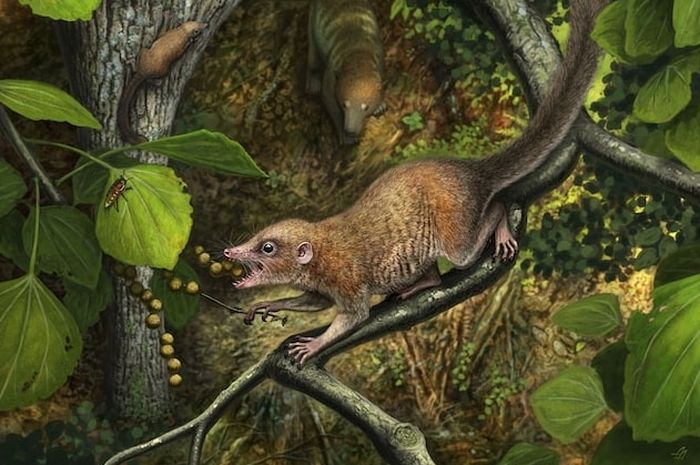ILLUSTRATION BY ANDREY ATUCHIN
–
A picture of an ancient primate that has just been described as the original. Shortly after the extinction of the dinosaurs, these were the earliest known primates.
–
Nationalgeographic.co.id—Shortly after the asteroid strike that resulted in the catastrophic extinction 66 million years ago, a group of tree-climbing and fruit-eating mammals began to thrive. These animals are relatives primates beginning to give rise to lineages to the first monkeys, gorillas, chimpanzees, and finally humans.
But this time, scientists explain in the journal Royal Society Open Science about finding the oldest primate fossils, in the form of teeth belonging to a new species Purgatorius mckeeveri. A precursor to modern primates that lived 65.9 million years ago, only 100,000 years after the extinction event at the end of the Cretaceous Period. The findings also reinforce the theory that primate ancestors coexisted with dinosaurs. Like Tyrannosaurus rex and the herbivorous giant Triceratops.
“This resets our view of evolution,” said Gregory Wilson Mantilla, lead author of the study and professor of Biology at the University of Washington. National Geographic.
Also Read: The origins of the Mutus village evangelism and the story of the Rajaampat Betew people
The researchers above used a technique called radiometric dating to measure the presence of compounds to place specimens in the first 100,000 years after the end of the Cretaceous era 66 million years ago. This makes the fossil finds the oldest known primate.
After examining the fragments of the Purgatorius vertebra from Hell Creek, the team became convinced that they had identified a new species in addition to the remains of the species Purgatorius janisae. They named the new species Purgatorius mckeeveri after the Montana rancher who allowed the researchers to work on their land.
The existence of these two species suggests that the plesiadapiform lineage stretches back to the Cretaceous era. So it raises the question of how our ancestors survived the mass extinction event.
Scientists have long hypothesized that one of the characteristics of early primates differs from that of other mammals. Like their food preferences.
Also Read: Movie Character Figures Have Role in Generating Science-Fiction Studies
In the world of scholarship, there are two schools of thought about the origin of primates. Some believe that the lineage dates back to about 56 million years, when animals with key characteristics to modern primates appeared in the fossil record. While others argue that “you have to look further back” or older than 56 million years.
The descendants of the plesiadapiforms primates, a group of mammals known to have teeth and the skeleton of today’s primates have been tracked down. These animals lack the forward-facing eyes and large brains of living primates. Although it is still debatable whether plesiadapiforms are true primates or not.
However, in 1965, a team of scientists found fossil teeth from the oldest genus of plesiadapiforms, namely Purgatorius. The teeth were 63 million years ago, and the discovery of the fossil then pushed the genus to existence 65 million years ago.
Also Read: One Year GRID STORE: Discounted e-Magazine Customer Service Available
Featured Videos
PROMOTED CONTENT
– .


